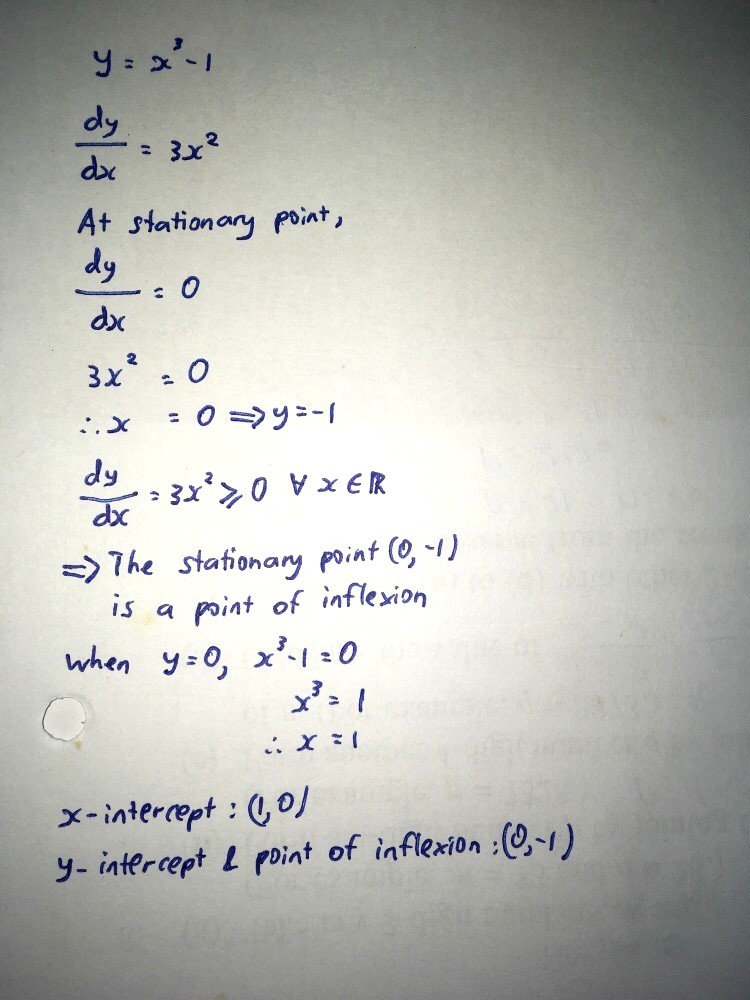Ask Singapore Homework?
Upload a photo of a Singapore homework and someone will email you the solution for free.

Question
secondary 4 | A Maths
2 Answers Below
Anyone can contribute an answer, even non-tutors.

Thank you
First always works. Second one most of the time, but not always, as the case here has shown. Usually I will do second derivative test if the expression is easy.
y = x^3 - 1
dy/dx = 3x2
At stat pt
dy/dx = 0
3x2 = 0
x = 0
y = -1
(0, -1)
First derivative test, test for values of dy/dx around x = 0
x = -0.1, dy/dx is +ve
x = 0, dy/dx is 0
x = 0.1, dy/dx is +ve
Up-zero-up
It’s an inflection.
The graph is what you have learnt
in E Maths for the graph of y = ax^n for n = 3, shifted one unit downwards.
From dy/dx = 3x², it's easy to see that d²y/dx² = 6x (without actually writing) and therefore = 0 since your x = 0. So before actually writing down, you can already switch to the first derivative method.
Alternatively, from dy/dx = 3x², we can already tell without checking any values that the gradient changes from positive before x = 0, to 0 at x = 0 and back to positive again after x = 0 (recall how a graph of y = x² looks like) and therefore it's an inflection point
See 2 Answers







